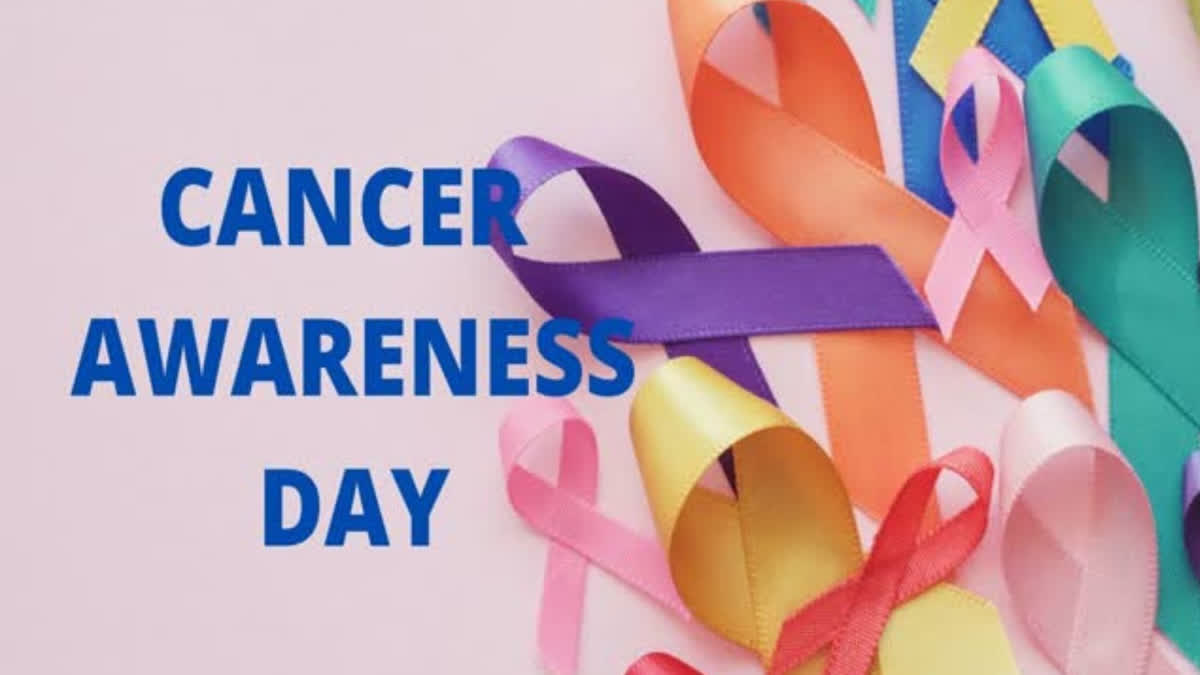New Delhi: Observed annually on November 7, the National Cancer Awareness Day aims to create public awareness about early detection, prevention, and treatment of cancer. Various healthcare organisations, government agencies, and other stakeholders organise awareness campaigns, seminars to mark National Cancer Awareness Day and work towards reducing the burden of cancer nationwide.
History & Significance
The National Cancer Awareness Day was first announced by the former Union Health Minister Dr Harsh Vardhan in September 2014. And since then, the day has been celebrated focusing on the early detection and cure of cancer.
On this day, health departments both at the centre and States, various healthcare organisations, government agencies collaborate to organise awareness campaigns, seminars, and street plays to raise awareness towards reducing the burden of cancer nationwide. It also highlights early detection and treatment of cancer.
What Is Cancer & Its Cause
Cancer is a large group of diseases that can start in almost any organ or tissue of the body when abnormal cells grow uncontrollably, go beyond their usual boundaries to invade adjoining parts of the body and/or spread to other organs. The latter process is called metastasizing and is a major cause of death from cancer. A neoplasm and malignant tumours are other common names for cancer. Lifestyle also plays a major role in the development of cancer.
“The cancer burden continues to grow globally, exerting tremendous physical, emotional and financial strain on individuals, families, communities and health systems. Many health systems in low- and middle-income countries are least prepared to manage this burden, and large numbers of cancer patients globally do not have access to timely quality diagnosis and treatment. In countries where health systems are strong, survival rates of many types of cancers are improving thanks to accessible early detection, quality treatment and survivorship care,” the world health watchdog observed.
Global Data On Cancer
According to the World Health Organisation (WHO), cancer is the second leading cause of death globally. In 2022, there were an estimated 20 million new cancer cases and 9.7 million deaths. The estimated number of people who were alive within 5 years following a cancer diagnosis was 53.5 million. About 1 in 5 people develop cancer in their lifetime, approximately 1 in 9 men and 1 in 12 women die from the disease.
Types Of Cancer
There are several types of cancer. Lung, prostate, colorectal, stomach and liver cancer are the most common types of cancer in men, while breast, colorectal, lung, cervical and thyroid cancer are the most common among women.
As per data provided by World Health Organization (WHO)’s cancer agency, the International Agency for Research on Cancer (IARC), lung cancer was the most commonly occurring cancer worldwide with 2.5 million new cases accounting for 12.4% of the total new cases in 2022. Female breast cancer ranked second (2.3 million cases, 11.6%), followed by colorectal cancer (1.9 million cases, 9.6%), prostate cancer (1.5 million cases, 7.3%), and stomach cancer (970 000 cases, 4.9%).
“Lung cancer was the leading cause of cancer death (1.8 million deaths, 18.7% of the total cancer deaths) followed by colorectal cancer (900 000 deaths, 9.3%), liver cancer (760 000 deaths, 7.8%), breast cancer (670 000 deaths, 6.9%) and stomach cancer (660 000 deaths, 6.8%). Lung cancer’s re-emergence as the most common cancer is likely related to persistent tobacco use in Asia,” the WHO said.
Projected Cancer Burden Increase In 2050
According to WHO, over 35 million new cancer cases are predicted in 2050, a 77% increase from the estimated 20 million cases in 2022. The rapidly growing global cancer burden reflects both population ageing and growth, as well as changes to people’s exposure to risk factors, several of which are associated with socioeconomic development. Tobacco, alcohol and obesity are key factors behind the increasing incidence of cancer, with air pollution still a key driver of environmental risk factors.
Prevention Of Cancer
According to WHO, the risk of cancer can be reduced by avoiding tobacco, maintaining a healthy body weight, eating a healthy diet (fruit and vegetables), doing physical activity on a regular basis, avoiding or reducing consumption of alcohol, getting vaccinated against HPV and hepatitis B, and avoiding ultraviolet radiation.
Cancer Data For India
As per the Indian Council of Medical Research’s Cancer Registry Data on National Cancer Registry Programme (NCRP), the estimated number of incidences of cancer cases was 13,58,415 in 2019 and 14,96,972 in 2023.
According to Indian Council of Medical Research (ICMR), besides access and availability of improved diagnostic techniques for detection of cancer, increased life expectancy, growing share of geriatric population, higher health consciousness and improved health seeking behaviour have contributed to registration of more number of Cancer cases in India.
In the last three years, since 2021 the number of cancer cases in India increased from 1426447 in 2021 followed by 1461427 in 2022 and 1496972 in 2023.
Uttar Pradesh with 215931 cancer cases in 2023 topped the list of States followed by Maharashtra with 124584 cases and 116230 cancer cases in West Bengal.
India’s Fight Against Cancer
The Department of Health & Family Welfare provides technical and financial support to the States and UTs under the National Programme for Prevention and Control of Non-Communicable Diseases (NP-NCD). Three most common types of cancers (oral cancer, breast cancer and cervical cancer are integral parts of NP-NCD.
The programme highlights strengthening infrastructure, human resource development, health promotion, screening of 30 years and above at Ayushman Arogya Mandir for common NCDs including diabetes, hypertension and common cancers (oral, breast and cervical). It also works on early diagnosis and management, referral to an appropriate level of healthcare facility.
Under NP-NCD, 753 District NCD Clinics, 356 District Day Care Centres, and 6,238 Community Health Center NCD Clinics have been set up.



